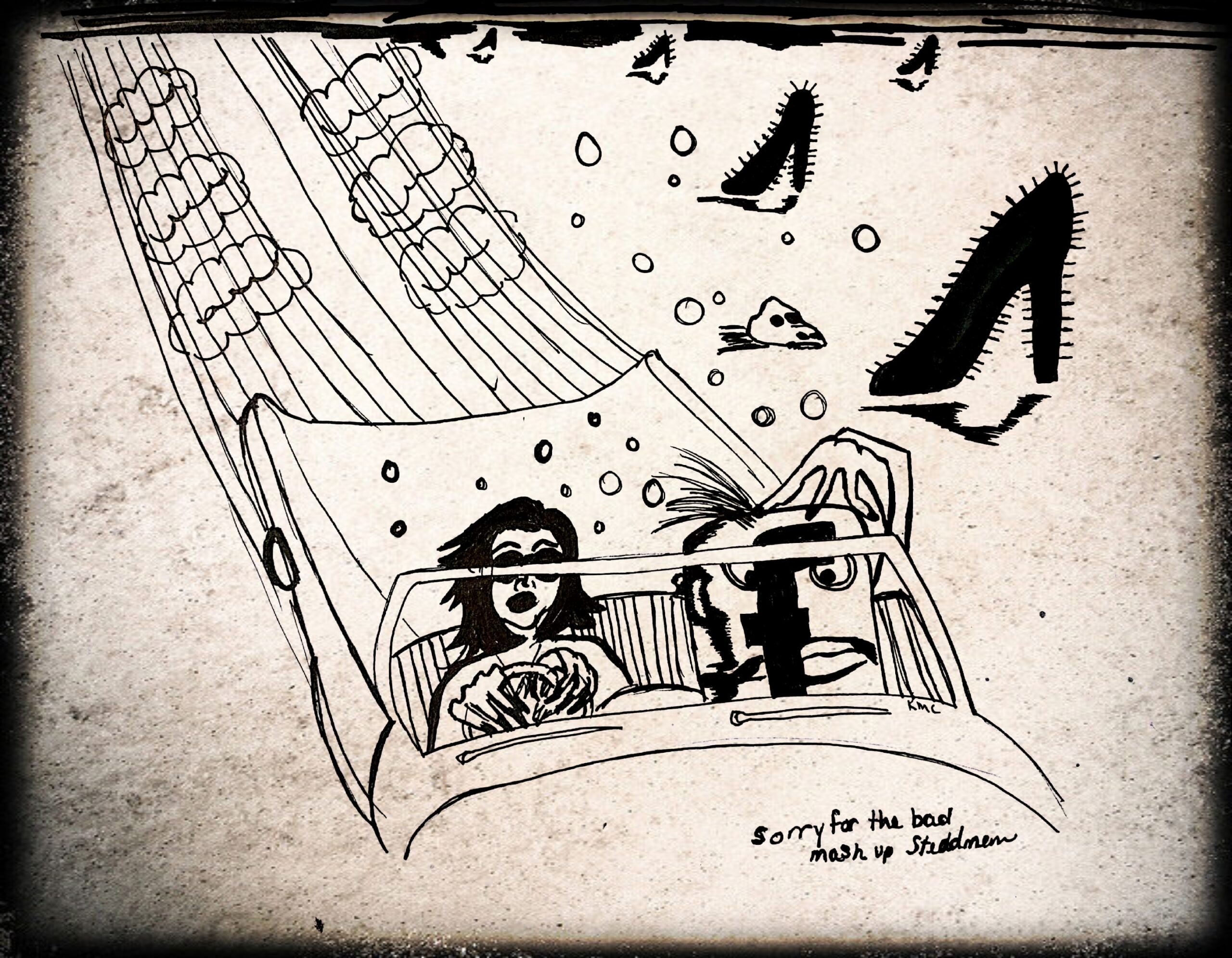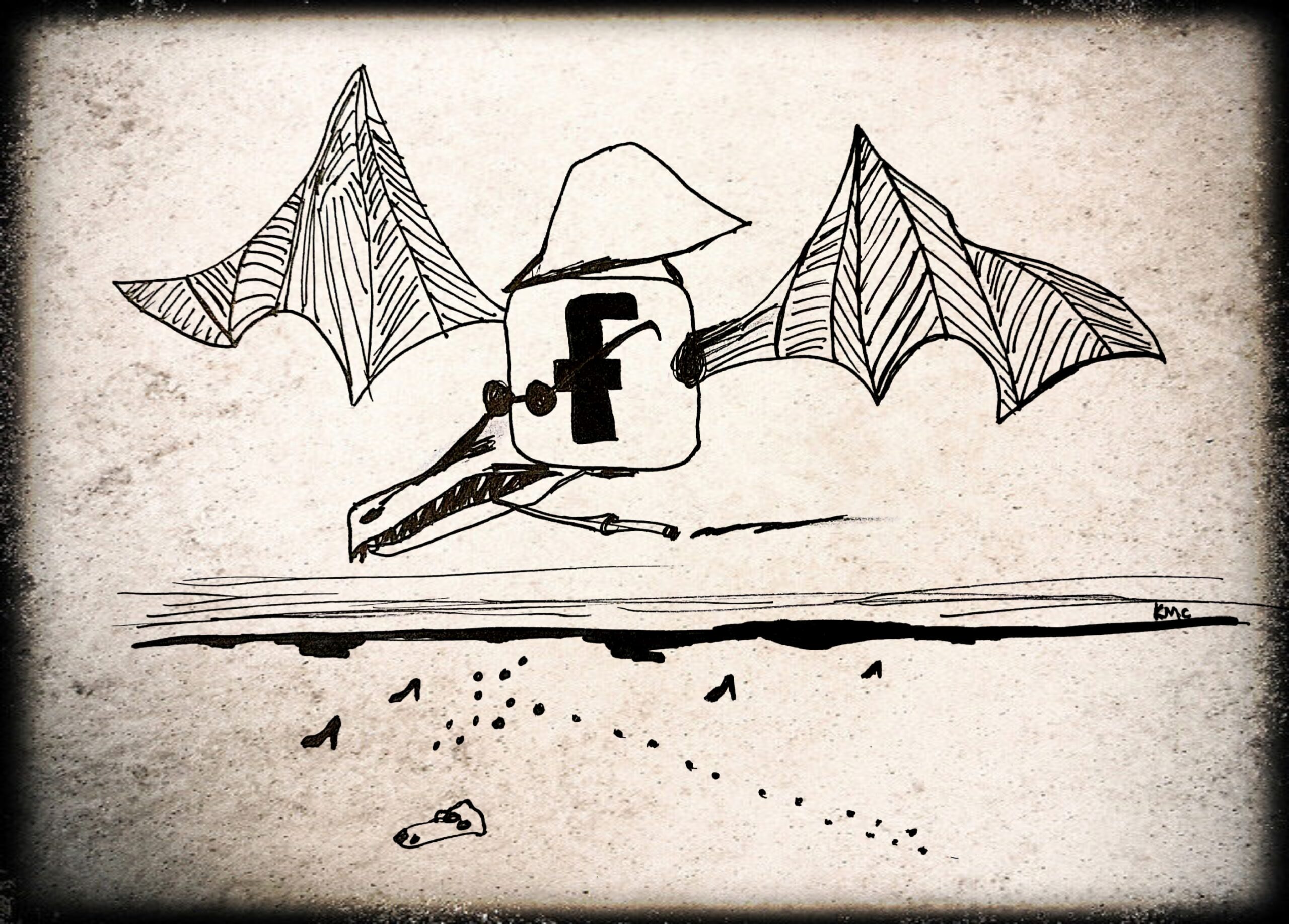
Fear & Self-Loathing in Lean In Pages
I’m consuming the “fall” of Facebook’s Chief Operating Officer Sheryl Sandberg with almost a morbid satisfaction. After the New York Times revealed executives at Facebook are nothing more than greedy, spin machines hell-bent on protecting the company, the world took the opportunity to revisit the whole Lean In thing.
I don’t want to take delight in Sandberg’s misfortune, but I feel like my long awaited “I told you so” is finally being realized. First things first, it is a misnomer that Sandberg has fallen. She is still a billionaire solidly backed by her board even though she made questionable decisions. However, the Lean In movement is definitely falling.
Some thought-pieces suggest the Lean In movement is tarnished by Sandberg. I say it is tarnished by faulty logic.
In the wake of the NYTimes piece, Alissa Quart had a solid take down of Lean In as a feminist banner in Bitch Media. And this piece from Vox explains how a self-proclaimed “Lean In Evangelist” turned off the movement because of her own inability to live up to Lean In tenets. It all culminated when Michelle Obama said “Sometimes that s*!t doesn’t work” in reference to Lean In to which Inc responded by dragging out sited research to prove the point.
“Sometimes that S*!t Doesn’t Work.” – – – Michelle Obama
Several voices in this discussion take on the Lean In premise that career women can “have it all” – family, powerful career, loving supportive spouse, mentors that elevate and companies that listen. However, they seem to be singularly focused on how career clashes with having children. However, children are NOT the hallmark for why Lean In doesn’t work.
To borrow from the eloquence of our former first lady, I am here to tell my story about how sometimes that shit doesn’t work, even for those of us who don’t have children.
The whole “Lean In” philosophy and fandom never resonated with me. Wait, I take that back, it resonated with me, but not in an empowering and inspiring way, rather is stoked my deeply held fears, self-loathing and feelings of inadequacy. In the pages of Lean In: Women, Work and the Will to Lead, I did not hear a powerful feminist voice, but rather an anthem that shamed and chided women for not achieving more.
The book hit the shelves on March 11, 2013. I was an Innovation Program Manager and struggling in my position. The company I was working for got swept up in the hype of the Lean In message and about a month after the publication, an email inviting employees to join a Lean In book club hit my inbox. I think only female employees received the invite, but my memory may be clouded by my personal frustrations at the company.
Later, in mid-April, I attended a meeting where my manager announced a department re-organization – a re-organization that eliminated my position.
You’re Not Fired, You Just No Longer Have a Job.
Our department had about 30 employees of which six were managers. There were also three or four managers reporting to other departments. It was a poorly executed matrix management system. (But, seriously, does anyone actually execute matrix management effectively?) The remainder of the team comprised of engineers deemed “innovators” because of their willingness to challenge the status quo (read: rabble rousers and troublemakers) – as if they wouldn’t challenge leadership disguised under the banner “innovation.” Somehow each person had two, if not three, managers. Yet, despite the fact I was spearheading the department’s first break-though “innovation” project that utilized nearly half of our engineers, not one person reported directly to me.
I was the only person on the team hired from the outside and I was charged with implementing “innovation practices.” In hindsight, I failed and became the first of many sacrificial lambs. As the newbie outsider lamb, it was easiest to slaughter me first.
Many companies fail at their first attempt to revitalize their ability to be disruptive and regain market leadership. To save the long drawn-out analysis of all the things that went wrong, I suggest reading The Other Side of Innovation by Vijay Govindarajan and Chris Trimble. Every cautionary tale in that book detailing what NOT to do outlines exactly what the company I worked for did.
When I was re-organized out of my job, I wasn’t laid off. Instead, my manager told me to either find out how I could help the department and propose a new job description for myself or look at job openings across the company. My one-year tenure was marked by false-starts, disruptions and frustrations that were highly visible and well-known. The department was under executive scrutiny. It was painfully difficult to implement “innovation practices” within a new department of nay-sayers. And that break-though “innovation” project was flailing. I was hardly able to rally support for an upstart position after the upstart position I was hired for was eliminated. Other departments did not consider me a hot commodity. In fact, I was frozen out of everything – including my own meetings.
Around the time my copy of Lean In arrived from inner-office mail, I had decided the writing was on the wall. Hanging my head low, I tucked my tail between my legs and submitted my resignation. I also opted for the ultimate “Lean Out” – I was not going to return to the technology field, I was not going to seek another position as a manager and I was not going to climb any more rungs of the career ladder. I was going to culinary school.
As a short-timer frozen out of work duties, I was able to read the entire book at my desk before I left.
Fear & Self Loathing in Lean In Pages
When I started my job, I was full of excitement. I felt so lucky to land a job for creatung something and to trying out new methods. When my job was eliminated, I fumed with anger. I felt abandoned by my manager, my co-managers and my team. My company had made me, a woman seeking to Lean In as a manager and innovator, a martyr.
The book stoked my fears about how I was not realizing my full potential. I was not only letting myself down but I was also letting down all the women who might come after me. I was setting a poor example for future leaders. I was full of self-loathing for failing to make this work. I hated myself for quitting. I should have stuck it out and seen the whole thing through to the finish. I should have realized my vision.
The book had me analyzing my behavior and needling all the little things I did wrong. I didn’t smile enough. I didn’t happily put up with the bully from marketing who tormented me. I wasn’t charming enough to manage a team that did not report to me while their actual managers undermined me. I couldn’t find allies who would stop my job from being eliminated. And, oh… a million other ways I failed to Lean In and excel.
In hindsight, I wasted all that self-loathing on an endeavor destined to fail. I am not without fault, but I was out-matched by the problem. In fact, all of my co-managers and many of the engineers were out-matched by the problem. The department dissolved and many long careers in the company ended short as a result.
Faulty Dogma
I’ve since gained distance from that fateful job. I missed the red flags that should have warned me off from such a treacherous journey. I’ve also grew some perspective on my tech career. I never wanted to be a corporate cog in the machine. I’ve even gone back and revisited the Lean In philosophy. I loathed that book not because I steeped in my job frustrations. Lean In is built on a faulty dogma.
It is built on the idea that women are not making it in the workplace because they are not working effectively inside the system. A system built by men who don’t have to strike that magical “have it all” balance that includes family, powerful career, loving supportive spouse, mentors that elevate and companies that listen. Male leaders before Sandberg got most of those things automatically and somehow she also got them automatically.
Before she had the powerful career, she had incredibly powerful mentorships – insiders who protected her, prevented her from becoming a sacrificial lamb and backed up her efforts to create new things. They probably also advised her that some golden tickets are not golden tickets at all. She had a company that listened, but they mostly listened because she had powerful backers. Then, by the time she had the powerful career, she had the money to hire people to take care of family and make space for her and her spouse. Furthermore, she also had the money to buy the things that keep her sane while Leaning In.
She did not break the system with feminism, she simply did what she does. She used feminism as a marketing tool to spin her own self image and personal brand.
I’ll Take a Pass
For me, now, I am more interested in quality of life. Certainly, being a Lean In, high-power billionaire would be a nice quality of life, but I’ll pass. I’d rather not sacrifice my human, humane and feminist values to just be a corporate cog in the machine.
Happy Cooking and Happy Leaning Out!
PS: I totally stole my sketch mashups from Ralph Steadman’s Illustrations for Fear and Loathing in Las Vegas by Hunter S. Thompson. Forgive me for the poor mimicry.


2 Comments
Oh I’m so glad you started following my blog because it meant I got to see this post here and shout AMEN! on this quiet afternoon :))))
I watched SO many women around me fall for the Sandberg garbage and wrote a lot about it on my blog back then (https://theecofeminist.com/2014/07/30/workin-9-to-5-and-learning-to-see-more-clearly/ is a favorite) – and even gave a talk about it when we were still in Portland (https://theecofeminist.com/2014/04/23/workin-9-to-5-and-my-tips-for-getting-a-job-in-tech/).
I also ADORE this Washington Post piece from back then: https://www.washingtonpost.com/blogs/she-the-people/wp/2014/02/25/recline-dont-lean-in-why-i-hate-sheryl-sandberg/?utm_term=.d6af919f0615.
When her husband died, I remember thinking “well, she’s going to eat her words” and instead she turned it – of course – into another book claiming how she now ‘gets it’. Barf.
PS I’m still in tech but I work from home on our farm on the Oregon Coast, recruiting remotely just enough to pay the bills, and focus more and more on the career coaching side which keeps me fully extricated from the bullshit Rock on that you went to culinary school!!
Thanks for reading! I really despised the book from the very beginning. I found it so grating to hear all the praise about the book.
Just read your Workin’ 9-5 piece. So relate to that. I am listening to Leslie Hawthorn’s talk now. Thanks for turning me onto these. I also loved the WP piece when it came out. Thanks for reminding me of it.
Still trying to figure out this career change, but its getting better.